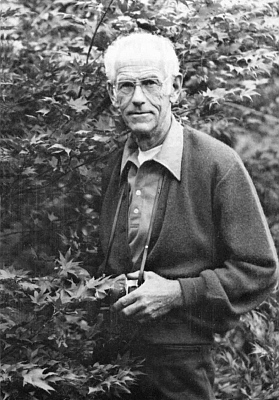Book Review
Molly Grothaus, Lake Oswego, Oregon
JAPANESE MAPLES by J. D. Vertress, Timber Press, P.O. Box 555, Forest Grove, OR,

|
|
J. D. Vertrees
Photo by Chris Photography |
The Japanese have been sophisticated gardeners for a very long time. The variations and sports of Japanese maple, a favorite tree, have been treasured and preserved for at least 300 years. This handsome book explores this great diversity in such an interesting and useful manner that it will undoubtedly remain the definitive book on the subject in English for many years to come.
The deciduous and lobed leaves of Japanese maples provide a contrasting texture for rhododendron plantings which greatly enhances the rhododendrons. In addition, Japanese maples provide two seasons of peak interest at the very times when most hybrid rhododendrons are least interesting. Early in the spring many of the maples have a "bloom" quality in the color of their new foliage which lasts several months. Then in the fall come spectacular masses of color.
In our garden, we have found the maples of the Dissectum Group to be fine small companions for dwarf rhododendrons. After 15 years or more all but
Acer palmatum dissectum atropurpureum
remain in excellent scale with the dwarfs.
Acer griseum
is large enough to provide rhododendron shade. The bark rolls back in papery cinnamon peels to reveal smooth copper underneath. It has year-round interest highlighted with brilliant scarlet autumn foliage.
But variation in leaf color and form creates the interest for most of the maples in the book. The cultivars of
Acer palmatum
are grouped mainly according to basic leaf shape. Each cultivar is well described, including, in most cases, its ultimate size. The verbal descriptions are supported by over 200 color photographs which provide a verbal feast.
A Guide to Use and Character in the back gives quick reference for comparing one cultivar with another.
The author, J. D. Vertrees, is a Roseburg, Oregon nurseryman. He has become a world-recognized authority on Japanese maples through his long time interest and experience in collecting, growing and propagating them plus his extensive research and travel.